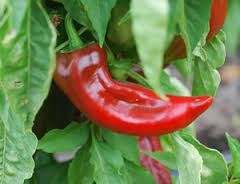
The Joe E Parker pepper is a variety of mildly hot Anaheim pepper types. Sturdy plants grow between 45-61 cm (18-24") tall and 41cm (16”) wide. A very productive plant that yields15-20 peppers per plant. Peppers average around 16-20 cm (6½-8”) and 2.5-5 cm (1½-2”) wide at the shoulder. They start out as bright green and mature to a red in about 75-85 days, weather dependent. Once picked, they will continue to ripen from green to red. The fruit is thick walled, crisp and has an excellent flavour. Often used as a stuffing pepper. Can be used green or red.
Growing Instructions:
Start seeds indoors 8-10 weeks before the last expected frost date in your area. Plant in well-draining soil in a warm, sunny location after the danger of frost has passed. Space plants 30-45cm (12-18”) apart. Peppers prefer slightly acidic soil with a pH of 6.0-6.8. Fertilize with a balanced fertilizer once a month during the growing season. Water regularly, making sure the soil stays moist but not waterlogged. Harvest peppers when they reach full size and have reached their mature color.
Soil Conditions: Well-drained soil. Soil pH: 6.0-6.8. Planting Depth: Start seeds indoors 8-10 weeks before the last expected frost date in your area. Germination: 7-14 days. Height at Maturity: 30-90cm (12-36”) tall. Days to Maturity: 60-100 days. Watering: Keep soil evenly moist. Sun/Shade: Full sun. Spacing after Thinning: Space plants 30-45cm (12-18”) apart.
